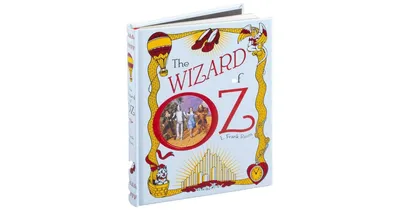Home
The Enchanted Island of Yew (1903). By: L. Frank Baum: Children's literature
Loading Inventory...
Barnes and Noble
The Enchanted Island of Yew (1903). By: L. Frank Baum: Children's literature
Current price: $8.65


Barnes and Noble
The Enchanted Island of Yew (1903). By: L. Frank Baum: Children's literature
Current price: $8.65
Loading Inventory...
Size: OS
*Product Information may vary - to confirm product availability, pricing, and additional information please contact Barnes and Noble
The Enchanted Island of Yew: Whereon Prince Marvel Encountered the High Ki of Twi and Other Surprising People is a children's fantasy novel written by L. Frank Baum, The first edition contained eight color plates and many colored-ink illustrations stamped over the text, and was dedicated to Kenneth Gage Baum, the youngest of the author's four sons. Yew is the most traditional of Baum's fantasy lands, with knights and castles as well as fairies. It resembles the countries of Queen Zixi of Ix more than the lands of Oz. The Island of Yew is set at some undisclosed place "in the middle of the sea". (Later commentators have sometimes placed it in Baum's Nonestic Ocean with the landmass that contains the Land of Oz and its associated countries but the book itself does not reference this.) Like Oz, it is divided into four countries associated with the four cardinal directions, plus a fifth central country that dominates the others. In the east of Yew lies the land of Dawna; in the west, "tinted rose and purple by the setting sun", is Auriel. In the south lies the kingdom of Plenta, "where fruits and flowers abounded"; and in the north is Heg, the most stereotypically feudal and medieval of the four. In the center, like the Emerald City in Oz, lies the fifth kingdom of Spor. But while the Emerald City is a powerfully positive place, the centrally-located Spor has just the opposite influence for Yew: Spor is a bandit land, ruled by the mysterious King Terribus, and populated by "giants with huge clubs, and dwarfs who threw flaming darts, and the stern Gray Men of Spor, who were the most frightful of all". The other peoples of Yew are pleased if the denizens of Spor come to rob them only once a year...................... Lyman Frank Baum (May 15, 1856 - May 6, 1919), better known as L. Frank Baum, was an American author chiefly famous for his children's books, particularly The Wonderful Wizard of Oz and its sequels. He wrote a total of 14 novels in the Oz series, plus 41 other novels, 83 short stories, over 200 poems, and at least 42 scripts. He made numerous attempts to bring his works to the stage and the nascent medium of film; the 1939 adaptation of the first Oz book would become a landmark of 20th century cinema. His works anticipated such century-later commonplaces as television, augmented reality, laptop computers (The Master Key), wireless telephones (Tik-Tok of Oz), women in high-risk and action-heavy occupations (Mary Louise in the Country), police corruption and false evidence (Phoebe Daring), and the ubiquity of advertising on clothing (Aunt Jane's Nieces at Work). Childhood and early life: Baum was born in Chittenango, New York in 1856 into a devout Methodist family. He had German, Scots-Irish, and English ancestry, and was the seventh of nine children of Cynthia Ann (née Stanton) and Benjamin Ward Baum, only five of whom survived into adulthood."Lyman" was the name of his father's brother, but he always disliked it and preferred his middle name "Frank". His father succeeded in many businesses, including barrel-making, oil drilling in Pennsylvania, and real estate. Baum grew up on his parents' expansive estate called Rose Lawn, which he fondly recalled as a sort of paradise. Rose Lawn was located in Mattydale, New York. Frank was a sickly, dreamy child, tutored at home with his siblings. From the age of 12, he spent two miserable years at Peekskill Military Academy but, after being severely disciplined for daydreaming, he had a possibly psychogenic heart attack and was allowed to return home. Baum started writing early in life, possibly prompted by his father buying him a cheap printing press. He had always been close to his younger brother Henry (Harry) Clay Baum, who helped in the production of The Rose Lawn Home Journal. The brothers published several issues of the journal, including advertisements from local businesses, which they would give to family and friends for free...


















